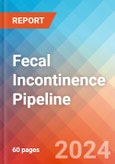Fecal Incontinence Understanding
Fecal Incontinence: Overview
Fecal incontinence (also called anal or bowel incontinence) is the impaired ability to control the passage of gas or stool. This is a common problem, but often not discussed due to embarrassment. Failure to seek treatment can result in social isolation and a negative impact on quality of life. There are many causes of fecal incontinence such as injury, disease and age.Childbirth-related injury: The most common cause of fecal incontinence results from a tear in the anal muscles during childbirth. Additionally, the nerves controlling the anal muscles may also be injured, leading to incontinence. Some injuries may be detected immediately following childbirth, though many go unnoticed until they cause problems later in life. Since it may be years after giving birth, childbirth is often not recognized as the cause of the problem.
Trauma to anal muscles: Anal operations or traumatic injury to the tissues near the anal region can damage the anal muscles and/or nerves and lessen bowel control.
Age-related loss of anal muscle strength: Some people gradually lose anal muscle strength as they age. A mild control problem may have existed when they were younger may progress later in life.
Neurological diseases: Severe stroke, advanced dementia or spinal cord injury can cause lack of control of the anal muscles, resulting in incontinence.
There are nonsurgical and surgical treatment options that can be used based on the cause and severity of the problem.
'Fecal Incontinence - Pipeline Insight, 2025' report outlays comprehensive insights of present scenario and growth prospects across the indication. A detailed picture of the Fecal Incontinence pipeline landscape is provided which includes the disease overview and Fecal Incontinence treatment guidelines. The assessment part of the report embraces, in depth Fecal Incontinence commercial assessment and clinical assessment of the pipeline products under development. In the report, detailed description of the drug is given which includes mechanism of action of the drug, clinical studies, NDA approvals (if any), and product development activities comprising the technology, Fecal Incontinence collaborations, licensing, mergers and acquisition, funding, designations and other product related details.
Report Highlights
The companies and academics are working to assess challenges and seek opportunities that could influence R&D Fecal Incontinence. The therapies under development are focused on novel approaches to treat/improve Fecal Incontinence.In March 2022, Pfizer announced the completion of its acquisition of Arena Pharmaceuticals, a clinical stage company developing innovative potential therapies for the treatment of several immuno-inflammatory diseases. Through this acquisition OP-352 acquired by Pfizer from Arena Pharmaceuticals.
This segment of the Fecal Incontinence report encloses its detailed analysis of various drugs in different stages of clinical development, including phase II, I, preclinical and Discovery. It also helps to understand clinical trial details, expressive pharmacological action, agreements and collaborations, and the latest news and press releases.
Fecal Incontinence Emerging Drugs
ICEF15: Innovacell Biotechnologie
ICEF15 is Cell therapy for treating fecal incontinence (urge incontinence). Treatment with ICEF15 aims at a causal and thus regenerative improvement of the external rectal sphincter.Fecal Incontinence: Therapeutic Assessment
This segment of the report provides insights about the Fecal Incontinence drugs segregated based on following parameters that define the scope of the report, such as:Major Players in Fecal Incontinence
There are approx. 5+ key companies which are developing the therapies Fecal Incontinence. The companies which have their Fecal Incontinence drug candidates in the most advanced stage, i.e Phase III include, Innovacell Biotechnologie.Phases
The report covers around 5+ products under different phases of clinical development like
- Late stage products (Phase III)
- Mid-stage products (Phase II)
- Early-stage product (Phase I) along with the details of
- Pre-clinical and Discovery stage candidates
- Discontinued & Inactive candidates
Route of Administration
Fecal Incontinence pipeline report provides the therapeutic assessment of the pipeline drugs by the Route of Administration. Products have been categorized under various ROAs such as- Oral
- Intravenous
- Subcutaneous
Molecule Type
Products have been categorized under various Molecule types such as
- Small molecule
- Cell Therapy
Product Type
Drugs have been categorized under various product types like Mono, Combination and Mono/Combination.Fecal Incontinence: Pipeline Development Activities
The report provides insights into different therapeutic candidates in phase II, I, preclinical and discovery stage. It also analyses Fecal Incontinence therapeutic drugs key players involved in developing key drugs.Pipeline Development Activities
The report covers the detailed information of collaborations, acquisition and merger, licensing along with a thorough therapeutic assessment of emerging Fecal Incontinence drugs.Fecal Incontinence Report Insights
- Fecal Incontinence Analysis
- Therapeutic Assessment
- Unmet Needs
- Impact of Drugs
Fecal Incontinence Report Assessment
- Pipeline Product Profiles
- Therapeutic Assessment
- Pipeline Assessment
- Inactive drugs assessment
- Unmet Needs
Key Questions
Current Treatment Scenario and Emerging Therapies:
- How many companies are developing Fecal Incontinence drugs?
- How many Fecal Incontinence drugs are developed by each company?
- How many emerging drugs are in mid-stage, and late-stage of development for the treatment of Fecal Incontinence?
- What are the key collaborations (Industry-Industry, Industry-Academia), Mergers and acquisitions, licensing activities related to the Fecal Incontinence therapeutics?
- What are the recent trends, drug types and novel technologies developed to overcome the limitation of existing therapies?
- What are the clinical studies going on for Fecal Incontinence and their status?
- What are the key designations that have been granted to the emerging drugs?
Key Players
- Pfizer
- Cook MyoSite
- Innovacell Biotechnologie
Key Products
- OP 352
- Iltamiocel
- ICEF 15
This product will be delivered within 2 business days.
Table of Contents
Companies Mentioned (Partial List)
A selection of companies mentioned in this report includes, but is not limited to:
- Pfizer
- Cook MyoSite
- Innovacell Biotechnologie








